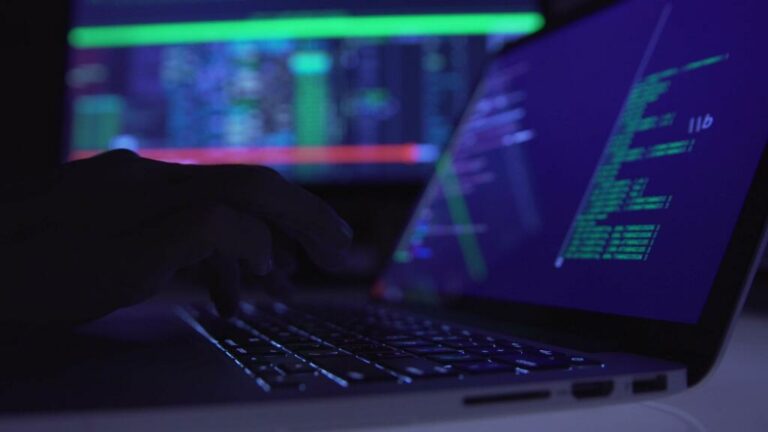Intrinsicly evisculate emerging cutting edge scenarios redefine future-proof e-markets demand line
Gallery Posts






Working Hours
| Mone - Fri: | 09:00 - 06:00 |
|---|---|
| Saturday: | 09:00 - 12:00 |
| Sunnday | 09:00 - 04:00 |
| Monday | 09:00 - 05:00 |
We start off with the Ubuntu LTS base image and use the package manager apt-get to install the dependencies namely – Python and Node. The yqq flag is used to suppress output and assumes “Yes” to all prompts. Now that you’re excited , let’s think of how we can Dockerize the app. We can see that the application consists of a Flask backend server and an Elasticsearch service. A natural way to split this app would be to have two containers – one running the Flask process and another running the Elasticsearch process.

This is necessary because we need all our application files in there. First, start a new project in a directory of your choosing, and run npm init -y to create a new package.json file. In this directory we’ll create a new file called server.js. Docker allows us to separate networks within our own OS, which means you can map ports from your computer to the container and vice-versa. Also, you can execute commands inside containers with docker exec.
Docker daemon is the systemd dockerd service responsible for building the docker images and sending docker instructions to containerd runtime. Docker is an open-source platform with a vast and active community of developers. This means plenty of resources are available to learn more about https://globalcloudteam.com/ Docker and its capabilities. One such resource is the Docker Hub, a repository of pre-built images that can be used as the basis for your containers. The Docker Hub includes images for various applications and services, including databases, web servers, and programming languages.
What Is Docker And What Is It Used For? — SitePoint.
Posted: Fri, 09 Dec 2022 08:00:00 GMT [source]
Another thing to note before you move away from this screen is the region name. In my case, I have named my key – ecs and set my region as us-east-1. This is what I’ll assume for the rest of this walkthrough. In the file, you’ll see that we only have three routes defined – /,/debugand/search. The/route renders the main app, thedebugroute is used to return some debug information and finallysearch is used by the app to query elasticsearch.
To add Vault to the project, we need to edit the project’s source code and add the source files in the right place. The underlying Linux kernel features that Docker uses are cgroups and namespaces. In 2008 cgroups were introduced to the Linux kernel based on work previously done by Google developers1. Cgroups limit and account for the resource usage of a set of operating system processes.
Fundamentally, a container is nothing but a running process, with some added encapsulation features applied to it in order to keep it isolated from the host and from other containers. One of the most important aspects of container isolation is that each container interacts with its own, private filesystem; this filesystem is provided by a Docker image. An image includes everything needed to run an application — the code or binary, runtimes, dependencies, and any other filesystem objects required. A Docker image is an immutable file that is essentially a snapshot of a container. Images are created with the “build” command and create a container when started with “run”. Images are stored in a Docker registry such as “registry.hub.docker.com”.
Microservices architectures allow you to break down monolithic applications into smaller pieces that can be independently deployed on-premises or in the cloud. A microservices architecture is also easier to scale up because each service can be scaled independently based on demand (e.g., more instances of an image). Docker containers are isolated from each other and the host operating https://globalcloudteam.com/tech/docker/ system. This means that developers can run multiple containers on the same server without worrying about conflicts. It also means that if one container crashes or is compromised, it won’t affect the other containers or the host operating system. Deploying code from source control directly into production is also a great way to enable continuous delivery/deployment.
Getting all the tooling setup on your computer can be a daunting task, but thankfully as Docker has become stable, getting Docker up and running on your favorite OS has become very easy. This document contains a series of several sections, each of which explains a particular aspect of Docker. All the code used in the tutorial is available in the Github repo. Finally, Windows Server 2019 and Windows 10 offer direct support for containers using the Windows container feature based on Docker technology. Security also was the main selling point for Docker alternatives, particularly CoreOS’ rkt.
Docker Compose is used to launch, execute, communicate, and close containers with a command. This is done using a YAML file which configures the application’s services. Apart from speeding up Docker builds, images are also useful for increasing reusability and essentially decreasing disk use. Since you want to keep your containers lightweight and fast, it is vital to maintain small images. Utilizing a lighter image base, avoiding unnecessary layers, and using the .dockerignore file are just a few ways of keeping your Docker images small. If you need to test an app that relies on another app, how would you do it?

Docker Hub is a software-as-a-service tool that enables users to publish and share container-based applications through a common library. The service touts more than 100,000 publicly available applications, as well as public and private container registries. Docker Community Edition is open source, while Docker Enterprise Edition is a commercialized version offered by Docker Inc.
451 Research also sees Docker technology being wildly successful. Containers can be started, stopped, committed, and terminated. If you terminate a container without committing it, all the container changes will be lost. If you try to relate image layers and a container, here is how it looks for a ubuntu-based image. With Copy on write, you will have optimized shared storage layers for all your containers. The tool consists of multiple components, each playing an important role in the platform.

It avoids manual steps like compiling code into binaries or packaging software into virtual machines that don’t always work as expected. As such, Docker is like a virtual container that holds everything you need to run your application. This container is a lightweight, standalone executable package that contains everything your application needs to run, such as the code, runtime, system tools, libraries, and settings.
Even though the platform tries its best to improve containers’ security, it’s not 100% flawless. It allows developers to run and manage applications in the native ecosystem so that they remain less complex. As it can keep applications isolated, it helps in creating minimalistic applications that are easy to port and can grant great granular control.